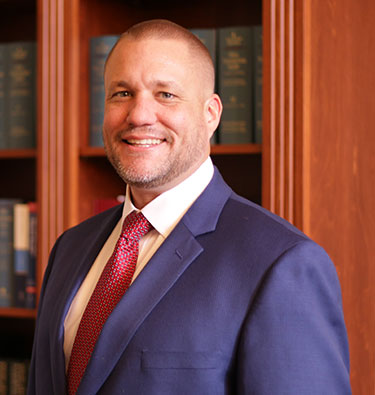
Anyone involved in a car accident resulting in an injury or substantial damage understands the event’s traumatizing effects. If deemed to be at fault for your accident, your responsibility for the accident limits the amount you may recover.
Hiring an attorney to negotiate your recovery can ensure you receive just compensation for your losses, regardless of whether you may be partially at fault.
Contact us online or call (419) 455-1410 today for a free consultation.
Ohio Comparative Negligence Overview
Before 1980, if you were found to be at fault in any way during a car accident, that fact prevented you from recovering compensation. For example, if you had a broken tail light and a speeding driver rear-ended you, the broken tail light would have barred you from recovery, even though the speeding driver was mostly at fault. The Ohio legislature realized the at-fault laws in place were inherently unfair. The enactment of legislation recognizing the theory of comparative negligence addressed this unfairness.
In 1980, Ohio became the 35th state to enact a comparative negligence law. Under this law, “negligence” is defined as a failure to take the level of care that a reasonable and prudent person would in similar circumstances, which results in harm or damage to another.
Under Ohio’s comparative negligence laws, damages are reduced in proportion to the injured party’s degree of fault. However, if the injured party is 51% or more at fault, they are barred from recovering compensation.
Liability and Damages
Comparative negligence operates in a manner that allows you, as the injured party, to recover your total damages less the proportion you were responsible for the accident.
For instance, in the example above, if your broken tail light meant you were 30% responsible for the accident, the speeding driver is responsible for 70% of the accident. Therefore, if your damages amounted to $200,000, you could recover 70% of those total damages from the speeding driver, or $140,000.
Proving Negligence
To recover in any accident, you must first prove negligence. Proving negligence requires showing the following elements:
- The alleged at-fault driver owed you a duty of care;
- The alleged at-fault driver acted negligently; and
- The alleged at-fault driver’s actions caused your injuries.
As the party seeking to recover compensation, you possess the burden of proof in the lawsuit. This means you must prove your case.
Common examples of negligent actions that lead to car accidents include:
- Operating a vehicle while under the influence of alcohol or drugs;
- Distracted driving, i.e., driving while texting or emailing;
- Violating a traffic law like speeding or running a red light; and
- Driver fatigue.
All Ohio drivers have a legal duty to operate vehicles with a reasonable standard of care. Failure to do so may result in a lawsuit for negligence.
Contact us for a free consultation
Comparative Negligence and Insurance Companies
There is no one method for calculating fault in comparative negligence cases. Typically, an insurance claims adjuster initially assigns the degrees of responsibility in an accident. An insurance company may use comparative negligence as a defense to save money and shift more blame onto the victim. This shift may result in a smaller recovery for injured parties.
Due to this, it’s essential to contact a personal injury attorney promptly to negotiate with an insurance company in the event this occurs. Retaining an attorney aids in reaching an agreement with the insurance company based on the proper degree of comparative fault.
Consult with a qualified personal injury attorney to discuss your accident. At Bensinger Law, attorney Aaron Bensinger works to defend your rights to obtain the best result for you. With attorney Aaron Bensinger, you pay nothing up front. You pay only when you receive a settlement or verdict in your case.
If hurt in a car accident and you were partly to blame, don’t assume this fact prevents you from recovering compensation for your injuries. Underpayment to unrepresented plaintiffs in comparative negligence cases may occur. Therefore, consulting with Bensinger Law to negotiate diligently with insurance companies on your behalf can help you get the best possible result.
To schedule a consultation with our team, call us at (419) 455-1410 or fill out our online contact form.


